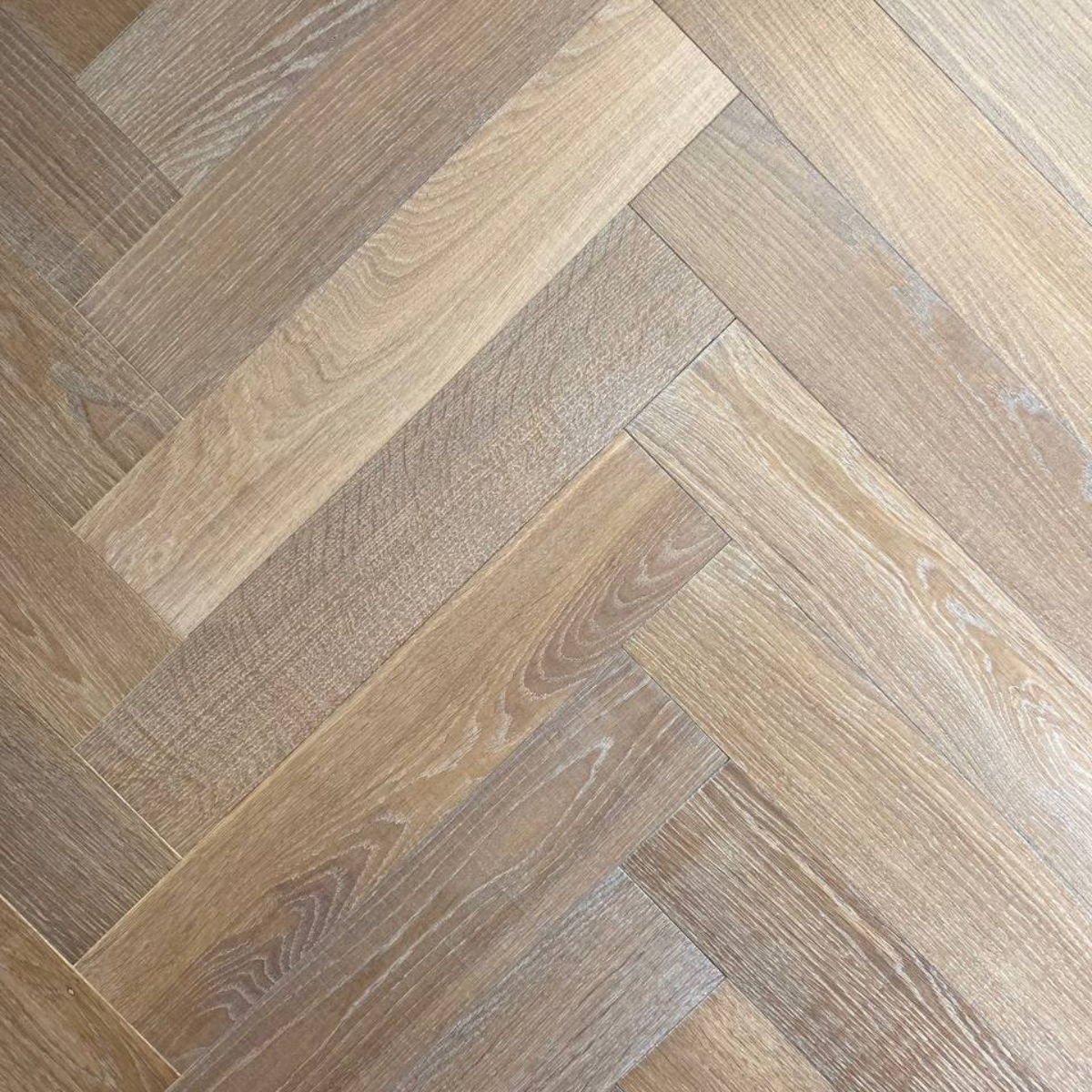
Herringbone Size
When it comes to choosing the width and length of herringbone engineered hardwood flooring, the considerations are similar to straight planks, but with some interesting twists due to the unique pattern:
1. Room Size and Proportion:
Width: Similar to straight planks, wider planks (140mm) can make a small room feel even smaller, while narrower planks (80-100mm) can elongate the space. However, with herringbone, the visual "busy-ness" of the pattern also plays a role. Wider planks may create a bolder, more dynamic look, while narrower planks can feel calmer and more spacious.
Length: Longer planks (600mm) can still visually expand a smaller room, but the effect is less pronounced than with straight planks. In larger spaces, longer planks can add elegance and emphasize the flow of the herringbone pattern.
2. Design Style and Desired Atmosphere:
Width: Wider planks can create a more striking and contemporary look, while narrower planks offer a classic and traditional feel. However, in herringbone, the pattern itself adds a layer of visual complexity, so wider planks can feel overwhelming in some spaces.
Length: Longer planks can enhance the elegance and sophistication of the herringbone pattern, while shorter planks can add a touch of rustic charm and break up a large space.
3. Installation and Waste:
Width: Wider planks can result in less cutting and waste during installation, as fewer plank pieces are needed to cover the same area. This can be cost-effective.
Length: Similar to straight planks, longer planks can have more waste due to cuts around obstacles and room corners.
4. Herringbone Pattern Variations:
Classic herringbone: This traditional pattern uses planks of equal length.
Stretcher bond: This variation uses longer planks alternating with shorter "stretcher" pieces, creating a more elongated and spacious feel.
Basketweave: This intricate pattern combines squares formed by four planks with diagonal planks running through them, adding visual interest and complexity.
5. Personal Preference and Existing Architectural Features:
Ultimately, your personal preference and the character of your space will guide your decision. Consider the existing architectural features and overall design theme to choose a width and length that harmonizes with the room.
Additional Tips:
Consult a flooring professional for expert advice on choosing the ideal width and length based on your needs, space, and desired herringbone pattern variation.
Remember, there's no single "rule" for choosing the perfect width and length for your herringbone floor. Experiment, explore your options, and choose the combination that speaks to your unique style and enhances the beauty of your space.
